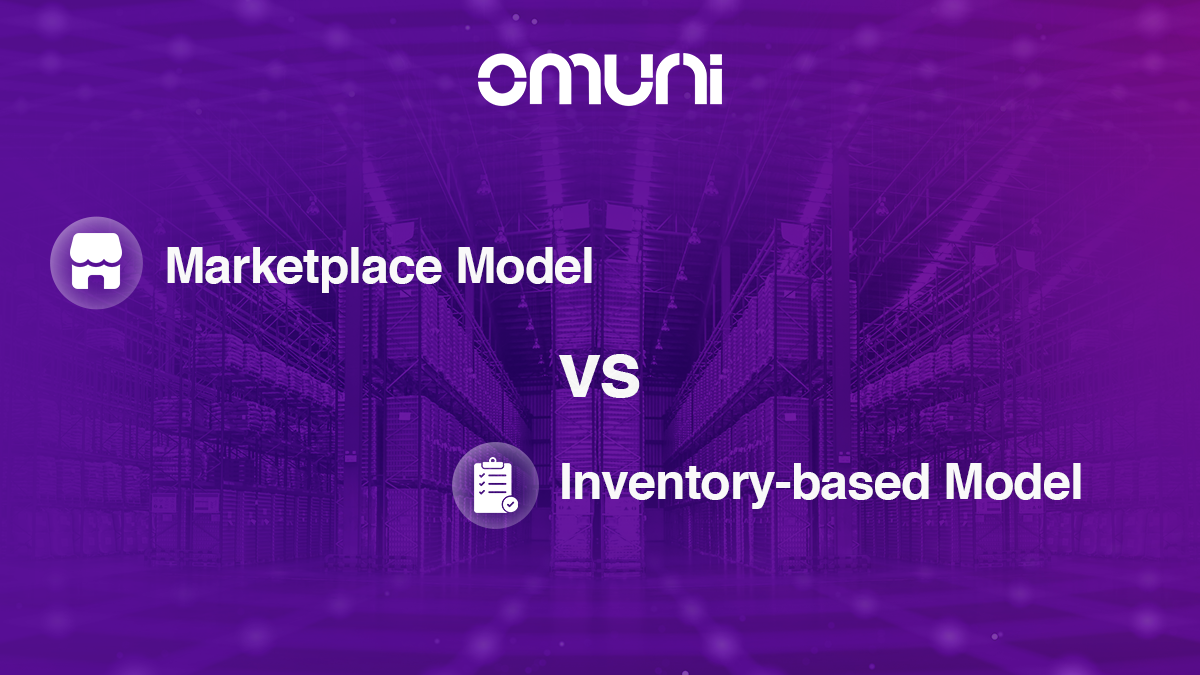How to Ace the Omnichannel Supply Chain Game
The omnichannel supply chain is crucial to the 21st century’s fast-paced, digitally-driven consumer industry. The retail sector and consumers’ preferences have evolved considerably over the years. The industry needs a robust approach that helps you seamlessly cater to varying customer demands across various channels. The omnichannel strategy does the job for you.
This shift is due to consumers’ expectations for convenience and personalisation, the growing importance of seamless omnichannel experiences and many other factors. You can leverage this change and maximise profits by opting for a sustainable omnichannel supply chain strategy.
What is Omnichannel Supply Chain
An omnichannel supply chain refers to a seamless and integrated method to supply chain management. It focuses on delivering customers a consistent and unified experience across various channels.
Please note that in the omnichannel supply chain, you seek to break down the barriers between distribution channels, such as brick-and-mortar stores, eCommerce platforms, social media and more.
One of the primary goals of the omnichannel supply chain is to ensure that customers can effortlessly switch between various distribution channels, such as brick-and-mortar stores, eCommerce platforms, social media and more. While facilitating this, you should also meet a consistent brand identity, product information, pricing and overall experience.
Benefits of an Omnichannel Supply Chain
The significance of an omnichannel supply chain lies in its ability to harmonise diverse sales channels, from brick-and-mortar stores to online platforms and other forms of retail.
You can leverage data-driven insights and real-time visibility to optimise operations, enhance customer satisfaction and gain a competitive edge in the dynamic retail landscape.
Here are some of the important benefits of an Omnichannel supply chain:
Channel Integration
All physical or digital channels are connected and share real-time data. This integration enables the synchronisation of inventory levels, order processing and customer information.
Seamless Customer Experience
One of the most crucial aspects of the retail business is a pleasant customer experience. An omnichannel supply chain ensures a smooth and seamless journey, regardless of the channel users interact with. For example, they can start browsing products online, add items to their cart, and complete the purchase in a physical store.
Real-time Inventory Visibility
Real-time visibility into inventory levels, order details and customer data across all channels is paramount for a retail business. This enables quick decision-making and ensures customers receive accurate product availability information.
Flexibility in Fulfillment
The core concept of the omnichannel operation rests on flexibility and convenience. Here, customers can choose from various fulfillment options, such as in-store pickup, ship-from-store or home delivery, depending on their preferences and convenience.
How to Win the Omnichannel Supply Chain Game

In the ever-evolving landscape of modern retail business, acing the omnichannel supply chain game is the key to flourishing in the digital age.
You should seamlessly integrate online and offline touchpoints to offer your customers a unified and consistent experience. Winning the omnichannel supply chain game requires a proactive and adaptive approach.
Here is a list of some of the strategies that should help you ace the omnichannel supply chain game:
Understanding Omnichannel Supply Chain
Understanding the concept applies to almost everything we attempt to do, and it is not an exception here too. The omnichannel supply chain encompasses integrating and coordinating various distribution channels, including brick-and-mortar stores and online platforms, to deliver customers a unified and consistent experience.
This approach joins the lines between different channels, ensuring customers can easily switch between them without disruptions. You should first understand your customer’s preferences and behaviours to start the omnichannel supply chain game.
Comprehensive data analysis and market research can show your crucial insights into customer demands, channel preferences and buying patterns. With this knowledge, you can match customer expectations.
Consumer-centric Supply Chain Strategy
A consumer-centric approach is second to none! By doing so, you meet your customers’ needs across all channels. A customer-centric approach lies at the heart of a successful omnichannel supply chain. By prioritising the needs and expectations of your customers, you can ensure a seamless and enjoyable shopping experience.
Customer-centricity demands real-time visibility into inventory levels and order status. You can opt for an advanced inventory management system to optimise stock levels, reducing the risk of stockouts and overstocking.
Embracing Technology to Perform Tasks
You can’t quite separate technology from anything nowadays. Technology is pivotal in helping you achieve an effective omnichannel supply chain. It allows you to centralise data, enhance communication and streamline processes.
With a unified platform, order and customer data can be accessed and updated in real-time, enabling quick decision-making and improved responsiveness. Additionally, you can leverage analytics and Artificial Intelligence (AI) to accurately predict customer demands, optimise inventory levels and enhance supply chain visibility.
End-to-end Planning and Information Flow
Omnichannel adoption may come with certain complexities for many businesses. Generally, omnichannel operations involve multiple sales channels and network nodes. Also, the need may arise to have a decentralised inventory. Despite this sophistication, it is recommended that you keep your operation consistent.
Customers want a unified experience every time they access products and transact. Therefore, omnichannel operations need seamless and calibrated end-to-end planning, forecasting, inventory management and information flow.
Transportation and Logistics Management
Most things boil down to fulfillment and the management of logistics service providers. These aspects of omnichannel are very crucial. Transportation may seem complex due to the different requirements when you are operating with multiple channels.
To ace the omnichannel race, you should ensure a reliable and fast service to all customers at competitive transport costs.
Conclusion
The omnichannel supply chain game requires a comprehensive and customer-centric approach. You can excel in omnichannel supply chain management by understanding customer preferences, embracing technology, optimising inventory and streamlining order fulfillment.
By ensuring a seamless and consistent shopping experience across all channels, you can build brand loyalty and gain a competitive advantage in today’s dynamic retail landscape.
Furthermore, actively listening to customer feedback and addressing pain points will help you drive continuous improvement. Understanding customer sentiments and expectations can lead to valuable insights, helping you master the omnichannel supply chain game.
An omnichannel supply chain strategy combines different sales and operation systems or merges warehouse or fulfillment operations to collectively serve in-store and online requirements.
The primary purpose of the omnichannel approach is to provide a consistent customer experience across various channels, such as brick-and-mortar and online sales.
The benefits of an omnichannel strategy are improved operational efficiency, reduced costs, increased sales, enhanced customer experience, etc.



